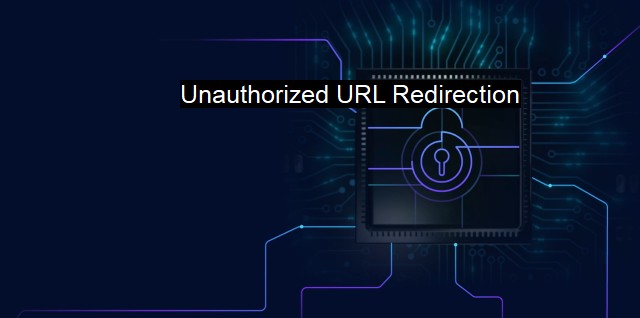What is Unauthorized URL Redirection?
Unauthorized URL Redirection: A Threat to Modern Internet Security
Unauthorized URL Redirection, steeped in the context of cybersecurity and antivirus protocols, forms a crucial nexus of web surfing protection. Often disguised under the garb of genuine links, these deceitful threats expose users to a myriad of potential risks and cybersecurity issues.Unauthorized URL Redirection, technically, is when an unauthorized person or entity controls and modifies the direction of a URL without user allowance, eventually directing users to unexpected and misleading destinations. Additionally known as Open Redirection Attacks, these deceptive practices function to piggyback unappearingly regular browsing experiences, leading to potentially harmful webpages or even spoofed websites mimicking legitimate counterparts.
Under the scope of cyber attacks, Unauthorized URL Redirection is abusive of the responsiveness aspect of web applications. From enabling hackers and adversaries to facilitate phishing attacks to seed malware and initiating session hijacking attempts, it represents a versatile, formidable portfolio of threats.
One key utilization of unauthorized redirection is to trick users into providing personal credentials over a familiar-looking platform; thereby, launching phishing attacks. Users, given the bona fide appearance of the website, may not realize the website's duplicity and unknowingly hand over their information to malicious entities. This not only compromises their privacy but can also lead to considerable identity theft, financial fraud, and at organizational levels- significant data breaches.
Being stealthy and highly deceptive, these redirection attacks are often successful in bypassing traditional security defenses such as antiviruses and firewalls. They exploit the trust reposed in legitimate URLs and circumvent security infrastructure, leaving the user exposed to potentially malicious alternatives.
Another disturbing extension of this redirection technique is its capability to spread malware. The redirected URLs may serve as conduits to deliver harmful software applications or scripts to the user's system. The downloaded malware then functions to steal information, corrupt system functionality or gain unauthorized access to system resources, among other destructive objectives.
In terms of implications, apart from causing individual users' ire, Unauthorized URL Redirection poses compelling ramifications for corporate entities and institutions similarly. Given firms’ leaning towards integrated networks and shared resources for operations and communications, these distantly perched cyber vulturers may conduct session hijacking, access manipulations and other forms of intrusionless breaching without detonating major requests. They might also mark redirections to possess session identifiers and advanced integrity grammars for cookie thefts, maintaining charactersitics identical to original trusted sources.
Simultaneously, unauthorized redirection may possibly affect search engine results. People often get redirected to websites that don't correspond to their search queries. This drastically impacts user experience and trust.
In addressing these threats, numerous security practices and guidelines are advisable. Employing web software that's programmed to detect and protect from redirection attacks can offer protection. Likewise, users should remain vigilant, verifying the credibility of links before clicking, reviewing redirected URLs, and employing two-factor authentication for sensitive applications. configuring browsers to block unwanted redirects and using comprehensive security solutions can enhancing protection from unauthorized redirections is advocated.
Unauthorized URL Redirection, is a robust, diversely implicated cybersecurity threat. As deceivingly under-reported as it may be, countering its shrouded, covert existence forms an integral part of secure web browsing, striking a blow against phishing, malware introduction and more profound impacts. An informed user is thus potentiated to not only protect themselves but also contribute to the overall integrity of the cyber sphere, a collective and shared responsibility in the age of digital proliferation.

Unauthorized URL Redirection FAQs
What is unauthorized URL redirection?
Unauthorized URL redirection is a type of cyberattack where a user is redirected to a malicious website without their knowledge or consent.How does unauthorized URL redirection occur?
Unauthorized URL redirection can occur in various ways such as through phishing emails, fake login pages or by exploiting vulnerabilities in a website's code.How can I protect myself from unauthorized URL redirection?
You can protect yourself from unauthorized URL redirection by staying vigilant about emails or messages with suspicious links, by using updated antivirus software, and by only visiting trusted and verified websites.What should I do if I suspect unauthorized URL redirection?
If you suspect unauthorized URL redirection, do not click on any links, disconnect from the internet, and contact your IT department or a cybersecurity professional immediately to assess the situation and take necessary measures.| | A | | | B | | | C | | | D | | | E | | | F | | | G | | | H | | | I | | | J | | | K | | | L | | | M | |
| | N | | | O | | | P | | | Q | | | R | | | S | | | T | | | U | | | V | | | W | | | X | | | Y | | | Z | |
| | 1 | | | 2 | | | 3 | | | 4 | | | 7 | | | 8 | | |||||||